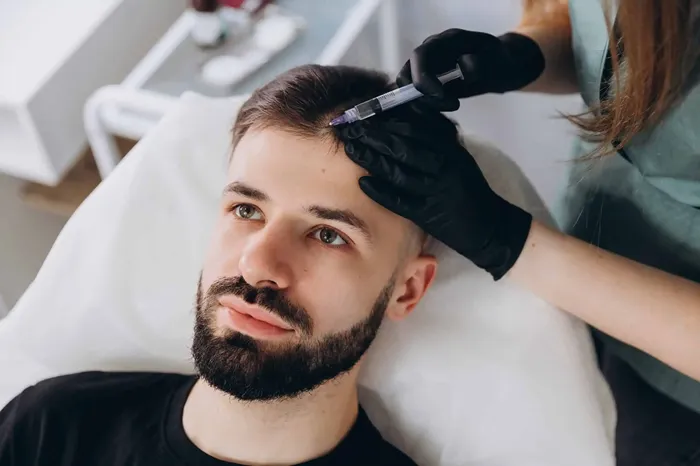Non-surgical hair replacement offers a viable alternative for individuals seeking to address hair loss without undergoing surgical procedures. These methods can provide immediate results and a natural-looking appearance. However, the longevity of non-surgical hair replacement can vary based on several factors, including the type of system used, maintenance, and individual care.
Understanding Non-Surgical Hair Replacement
Non-surgical hair replacement involves using hair systems, scalp micropigmentation, hair thickening fibers, or other non-invasive methods to create the appearance of a fuller head of hair. These methods are particularly beneficial for those who prefer a quick and less permanent solution to hair loss.
Types of Non-Surgical Hair Replacement
Hair Systems
Hair systems, including wigs and toupees, are custom-made to match the individual’s natural hair color, texture, and density. These systems are attached to the scalp using medical-grade adhesives and can last anywhere from three to six months before needing replacement. Proper care, such as limiting hair washes and avoiding vigorous scrubbing, can extend their lifespan.
Scalp Micropigmentation (SMP)
SMP involves tattooing the scalp to create the illusion of hair follicles. This method is particularly effective for individuals with a shaven head look or those looking to conceal scars and thinning hair. SMP results are long-lasting and low-maintenance, typically lasting up to five years with minimal touch-ups.
Hair Thickening Fibers
Hair thickening fibers are keratin-based fibers that adhere to existing hair, creating a fuller appearance. These fibers are water-resistant and sweat-proof, lasting up to 12 hours. They are an affordable and easy-to-use option for those with thinning hair.
Factors Influencing Longevity
Maintenance and Care
Regular maintenance is crucial for extending the lifespan of non-surgical hair replacement systems. Hair systems may require adjustments and reattachment every few weeks, while SMP may need occasional touch-ups. Proper care, such as avoiding heat, chemicals, and rough handling, can prevent damage and prolong the life of the system.
Individual Factors
The longevity of non-surgical hair replacement can also be influenced by individual factors such as hair type, scalp condition, and lifestyle. For instance, synthetic hair replacements typically last up to six months, while natural human hair replacements can last longer with proper care. Additionally, the environment, including exposure to chemicals, chlorine, and UV light, can reduce the longevity of hair systems.
Conclusion
Non-surgical hair replacement offers a range of options for addressing hair loss, each with varying longevity. Hair systems typically last three to six months, while scalp micropigmentation can last up to five years. Hair thickening fibers provide a temporary solution, lasting up to 12 hours per application. The lifespan of these methods can be influenced by maintenance, individual factors, and the type of system used. Consulting with a hair restoration specialist can help determine the best non-surgical option for your specific needs and ensure optimal results.
Related topics:
- How Much is Non-Surgical Hair Replacement?
- Does Non-Surgical Hair Replacement Work: What You Need to Know
- Top 5 Non-Surgical Hair Restoration Solutions for 2024


